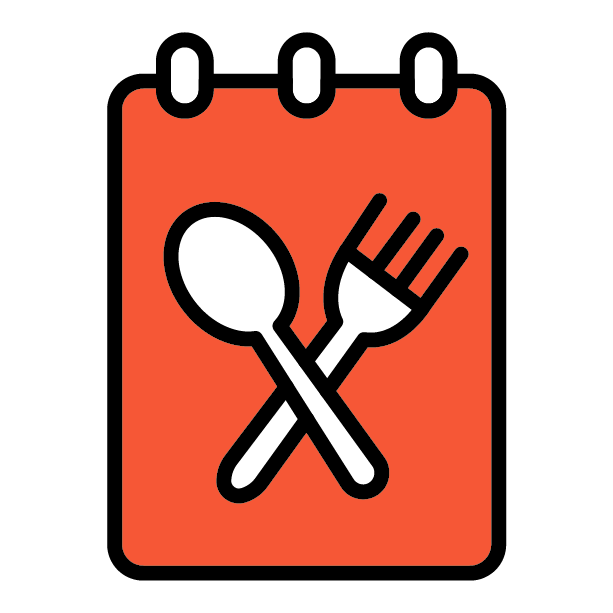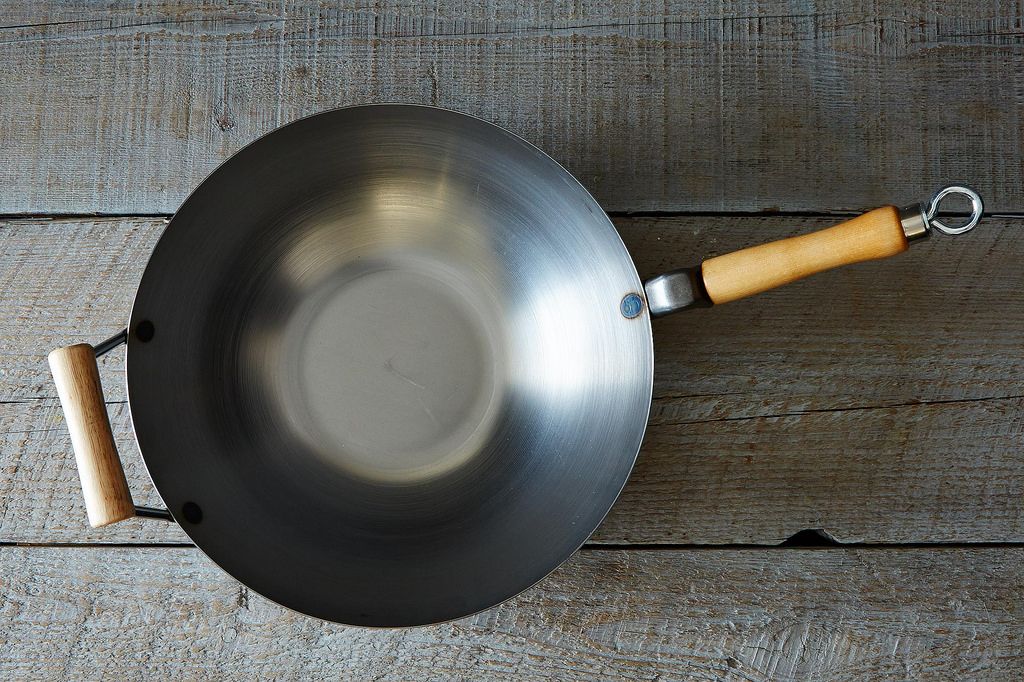So you’re the owner of a brand new wok, which means you can take that thing right out of the box and start chopping veggies for a chicken chow mein, right? Wrong! Woks require some tender love and care, but don’t worry; we’re here to help get you started!
This article will provide you step-by-step instructions for how to initially clean a wok, season a wok, and care for it so you can maximize its performance, maintain its condition, and start making all your favorite stir-fry recipes, full of flavor and aroma.
Why We Must Season a Wok
Tablecraft CW80119007 CaterWare 15 inch Carbon Steel Wok with Wood Riveted Handle
Woks come in a variety of materials, including the porous metals of cast iron and carbon steel. Using these porous metals when unseasoned will cause them to absorb water, which will eventually cause your wok to rust. Therefore, it is important to season a wok before you start cooking with it. By seasoning a wok, you’re creating a patina, a layer coating the inside of the pan. As you continue to cook more and more with your wok, the oil or any other form of lard you’re frying with will cause the patina to gradually
Lodge Pro-Logic P14W3 14 inch Pre-Seasoned Cast Iron Wok become thicker and heavier, ultimately creating a natural, non-stick cooking surface. This layer also adds enhanced flavor and seasoning to every meal…So let’s get started!
There are three main methods used to season a wok.
- Stovetop seasoning
- Oven seasoning
- Salt seasoning
Every chef has his or her own preference regarding which method works best. Certain woks, depending on handle material, are recommended to be seasoned one way over the other to preserve the quality of the wok. All three of these methods, however, require the same initial step: The wok must be washed so the bare metal is exposed.
When manufacturers ship woks, they apply a factory oil to prevent rusting during transport, which can be caused by humidity or other environmental variables. This initial oil that is applied is not one in which you want to be cooking your food, so this is the first and virtually only time you should wash your wok with an abrasive sponge and soap.
To clean a wok for the first time, follow these steps:
Stainless Steel Standard Weight Scouring Pads – 12/Pack
- Fill the sink with hot, soapy water.
- Scrub the inside and outside of wok with a scouring pad.
- Completely rinse. Dry wok with a clean, dry towel.
- Place on the stovetop over medium-high heat to completely dry the wok and evaporate any leftover water.
Now that you’ve removed all the manufacturer’s oil and have exposed the bare metal, it’s time to pick your seasoning oil or other form of lard.
How to Season a Wok
Stovetop Seasoning Method
Complete initial washing to remove factory oil. Preheat wok over high heat until you can feel the warmth radiating off the bottom of the wok from a few inches above.
You can also perform a water test by throwing a drop of water on the pan. If it’s heated enough, it’ll evaporate within a second, and it’s ready to be seasoned.
Add in about 2 tablespoons of your desired oil or lard, and reduce heat to medium-high.
If using lard, grip a towel with a pair of tongs, and completely cover the inside of the wok with lard. Once done, wipe away excess lard with a paper towel and let cool. You can now skip steps 3-8.
Add in fresh chopped ginger and scallions, or other spices of your choice. Reduce heat to medium.
How to Season a Wok As ginger and scallion mix start to soften, use your turner to actually spread the mixture to cover the entire surface of the inside walls, so your wok is covered from rim to bottom.
Continue doing this for about 20 minutes over medium heat.
If you notice ingredients are becoming too dry or are starting to burn, add in more oil, a little at a time. Dump mixture out, and let the wok cool down.
Rinse with hot water, and use a bamboo wok brush, sponge, or the soft side of a scrubber to remove any excess food particles.
Place wok back on stovetop over high heat to completely dry and evaporate all water. Either store the wok until you’re ready to use it or repeat this process up to 3 times for a better, thicker seasoning.
See also:


